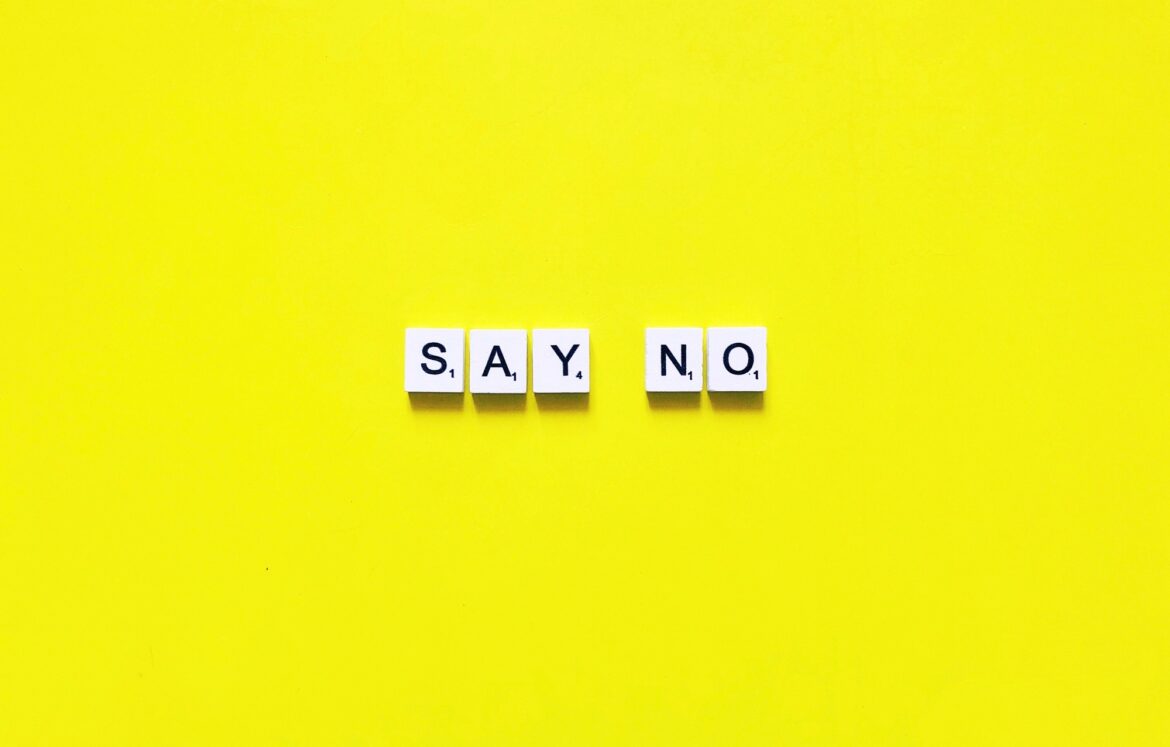How to Master the Art of Saying No, Kindly

In a world that demands more from us every day, the ability to say no is a skill that is often overlooked. We fear the consequences of rejecting requests, whether from family, friends, or colleagues. But saying yes to everything can lead to stress, burnout, and a lack of focus.
The key to managing your time and energy is learning to say no—kindly and with confidence. This article will explore how you can master the art of saying no in a way that preserves relationships, respects your boundaries, and ultimately saves you time for the things that truly matter.
1. Recognize the Importance of Your Time
Your Time Is Limited
The first step in learning to say no is recognizing that your time is precious. Every commitment you make takes away from something else, whether it’s your personal time, work, or the opportunity to focus on what truly matters. By acknowledging that your time is finite, you’ll realize that saying yes to every request comes at a cost.
Understanding Your Priorities
Before saying yes or no to a request, take a moment to evaluate how it fits into your current priorities. Does it align with your values or goals? Will it help you move closer to your long-term objectives, or will it divert your attention from the things that are most important to you?
This is where the essence of time and luck comes into play. When you say no to the wrong opportunities, you’re actually saying yes to the right ones that will allow you to grow and succeed in the areas that matter most.
2. Set Clear Boundaries
Define What You’re Willing to Do
Setting boundaries is essential when learning how to say no. People often struggle with rejecting requests because they haven’t defined their limits. Without clear boundaries, it’s easy to say yes out of guilt or fear of disappointing others.
Create Boundaries for Different Areas of Your Life
- Work: Set specific work hours and stick to them. Let your colleagues know when you’re available and when you’re not.
- Personal: Don’t feel obligated to attend every social event or respond to every phone call. Prioritize your personal time and be clear about when you need space.
- Family and Friends: While it’s important to be there for loved ones, it’s also essential to make sure you’re not overcommitting. Let them know your limits while offering alternative ways to stay connected.
By setting clear boundaries, you’ll naturally be able to say no without feeling guilty, knowing that you are honoring your own needs and well-being.
3. Be Honest and Direct
Clarity Over Evasion
One of the biggest mistakes people make when saying no is beating around the bush. If you want to say no kindly, be honest and direct without over-explaining yourself. People appreciate clarity, and when you communicate openly, it removes any ambiguity.
How to Be Honest, Yet Kind
- Use “I” Statements: Focus on your own needs and limitations. For example, instead of saying, “I don’t have time,” try, “I have other priorities right now.”
- Avoid Apologizing Excessively: While it’s good to acknowledge that you’re unable to help, don’t over-apologize. Apologizing too much can make it seem like you’re guilty, which can cause unnecessary stress for both you and the other person.
- Be Firm but Polite: Say no with confidence, but always remain respectful. You can say, “I’m unable to commit at this time” or “This isn’t something I can take on right now.”
The beauty of this approach lies in its simplicity. You preserve both your time and relationships by being clear, kind, and confident.
4. Offer Alternatives
Suggest a Compromise
While saying no is important, there are situations where offering an alternative can soften the refusal and show that you care. Instead of leaving the person with nothing, offer a different solution that might work for both of you.
Examples of Offering Alternatives
- Offer a Referral: If you can’t help with a task, recommend someone else who might be able to. “I’m unable to help with this, but have you considered asking [Name]?”
- Suggest a Future Time: If you want to say no but still want to help later, say, “I can’t commit to this now, but I’d love to help you in the future. Let’s revisit this next month.”
- Offer a Different Resource: For requests related to advice or assistance, suggest a resource like a website, video, or article that could help them.
Offering alternatives shows that you care about the request and are still willing to assist in a way that respects your boundaries and time.
5. Learn the Power of Silence
Don’t Feel the Need to Explain Yourself
Sometimes, the most effective way to say no is simply by being silent. Many people feel the need to over-explain their reasons for declining a request, but doing so can give the other person a chance to push back. Instead, you can politely decline and leave it at that.
How to Use Silence Effectively
- Be Polite: Respond with a firm but friendly no. “I’m going to have to pass on this. Thank you for understanding.”
- Don’t Engage in Guilt: If the person tries to make you feel guilty, gently repeat your refusal. “I really can’t do this right now. I hope you understand.”
- Don’t Over-Explain: Keep your response short and to the point, without offering unnecessary justification.
By mastering the power of silence, you can avoid unnecessary back-and-forth and maintain control over your decisions.
6. Recognize When Saying No is a Form of Self-Care
Saying No is an Act of Self-Respect
It’s easy to fall into the trap of people-pleasing, where you feel obligated to say yes to every request. But constantly putting others’ needs before your own can lead to burnout and resentment. Saying no is not just a way to protect your time; it’s also an act of self-care and self-respect.
How Saying No Can Improve Your Well-Being
- Reduce Stress: By not overloading yourself with tasks and commitments, you create more time to focus on your own mental and physical health.
- Improve Relationships: When you say no, you’re respecting your own needs, which allows for more genuine connections with others. People appreciate your honesty, and you’ll build more authentic relationships.
- Create More Time for the Important Stuff: Saying no opens up space for the things that truly matter to you — whether that’s spending quality time with loved ones, focusing on your career, or simply having some time to recharge.
Embrace saying no as a form of self-care. You’re not only honoring your time but also investing in your long-term well-being.
Conclusion: Embrace the Power of Saying No
Mastering the art of saying no is a journey of self-awareness and self-respect. By recognizing the value of your time, setting clear boundaries, and learning how to say no kindly, you can protect your energy and focus on the things that truly matter. It’s not about being selfish, but rather about respecting your own needs and making room for the moments that bring true value to your life. After all, time is the most precious gift we have — use it wisely, and don’t be afraid to say no when necessary.








